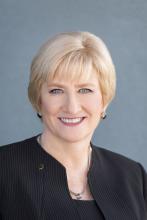For the first time, employed physicians outnumber independent physicians, according to a survey from the American Medical Association.
The AMA’s annual Physician Practice Benchmark Survey, which queried 3,500 doctors, showed that 47% of all physicians in 2018 were employed, compared with 46% of doctors who were self-employed that year. The number of employed physicians has risen 6 percentage points since 2012, while the number of self-employed doctors has fallen by 7 percentage points over the same period, according to the study published May 6 on the AMA website.
Younger physicians and women doctors were more likely to be employed than their counterparts. Nearly 70% of physicians under age 40 years were employees in 2018, compared with 38% of physicians 55 years and older, the study found. About 35% of physicians worked either directly for a hospital or in a practice at least partly owned by a hospital in 2018, up from 29% in 2012.
More than half of physicians surveyed (54%) worked in physician-owned practices in 2018 either as an owner, employee, or contractor, a decrease from 60% in 2012. Male physicians were more likely to be practice owners than female physicians. Among female doctors, 58% were employees, compared with 34% who were practice owners, while 52% of men physicians were practice owners, compared with 42% who were employees.
Surgical subspecialists had the highest share of owners (65%) followed by obstetrician-gynecologists (54%) and internal medicine subspecialists (52%). Emergency physicians had the lowest share of owners (26%) and the highest share of independent contractors (27%). Family physicians, meanwhile, had the highest share of employed physicians (57%).
A majority of doctors still work in small practices, the analysis found. In 2018, 57% of physicians worked in practices with 10 or fewer physicians versus 61% in 2012. However, fewer physicians work in solo practice. Between 2012 and 2018 the percentage of physicians in solo practice fell from 18% in 2012 to 15% in 2018.
“Transformational change continues in the delivery of health care and physicians are responding by reevaluating their practice arrangements,” AMA President Barbara L. McAneny, MD, said in a statement. “Physicians must assess many factors and carefully determine for themselves what settings they find professionally rewarding when considering independence or employment.”
The AMA’s Physician Practice Benchmark Survey is a nationally representative survey of post-residency physicians who provide at least 20 hours of patient care per week, are not employed by the federal government, and practice in one of the 50 states or the District of Columbia. The 2018 survey was conducted in September 2018, and the final data included 3,500 physicians.


